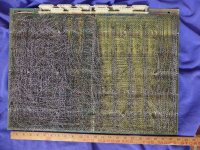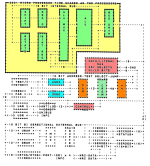It's not what was asked but there is a Gitlab link:
Project to rebuild boards for a PDP-11/70 computer. Boards should be 100% compatible with the original, and offer a way to use more modern components.

gitlab.com
"attempt to build a motherboard (how many layers this monster will be ? no idea)" just kind of noted in passing at the end of the list...
All the logic boards are the smallest part of the problem and the technologically easiest part.
The backplane in the 11/70 was a two piece wire-wrapped monstrosity that was the single largest cost part of the system.
In fact it was the manufacturing cost of the backplane (as both PCB technology and wirewrap technology, using both single ended and diffpair wire wrapping)
that was a significant factor in the discontinuance of the 11/70 and its follow-on 11/74.
Cloning the existing 11/70 boards 1:1 does nothing to improve the technology needed to build the backplane,
which I think has been completely misunderstood and woefully underestimated as to the complexity.
You can easily get away with just four layer (2 signal, 2 planes) for all the boards, maybe some can be done as just 2 layer boards.
But the backplane connectivity now implemented by random wire wrap will require, who knows, maybe 18 or 24 layers to get it all in in etch.
And these would be very large (meaning very expensive PCBs).

 gitlab.com
gitlab.com



